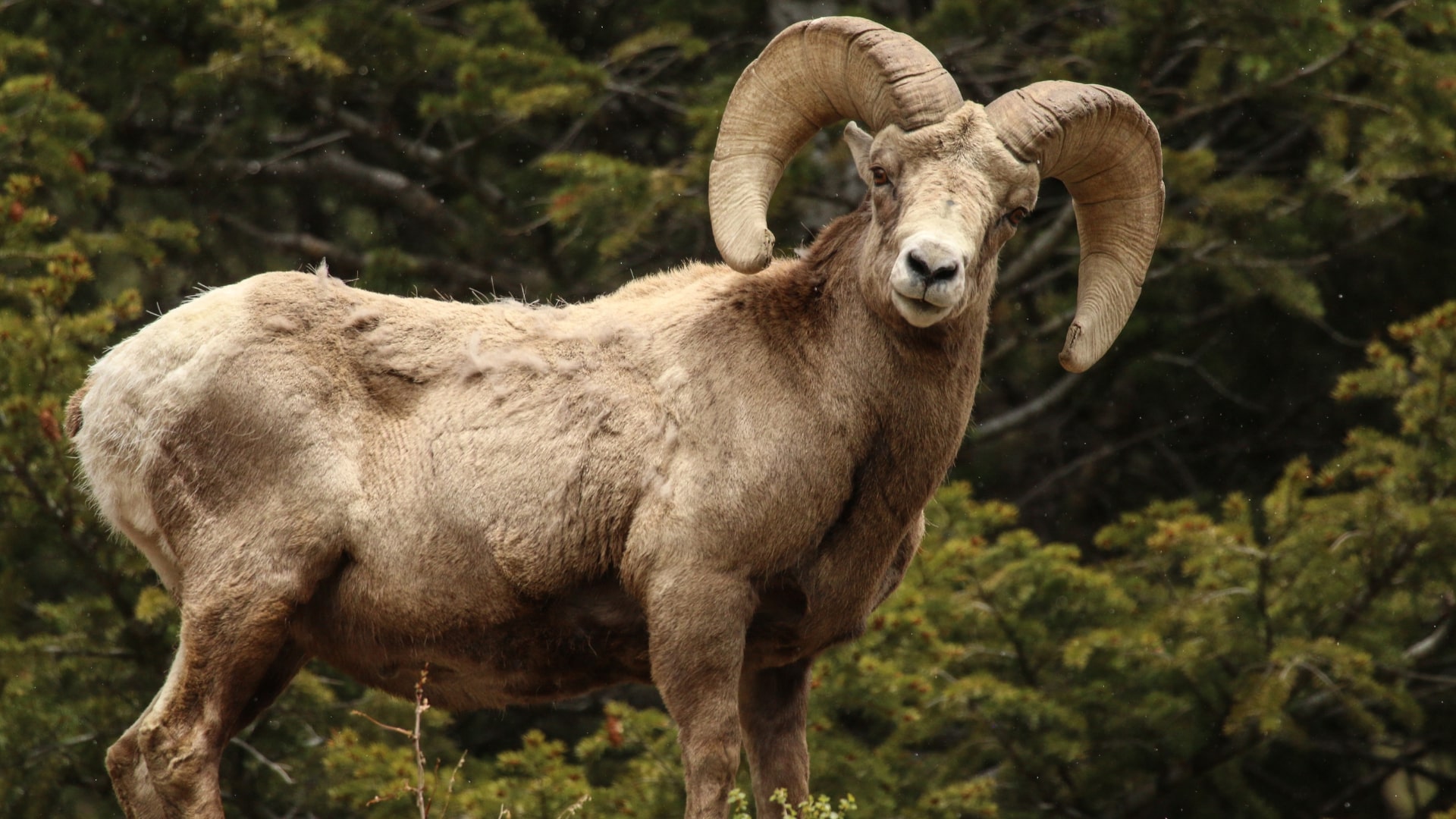Physical characteristics
The Bighorn sheep (Ovis canadensis) is a large, heavy-bodied ungulate with a distinctive pair of curved horns on their head. Their coat is typically brown or gray, and their fur is thick and woolly to help them survive in harsh environments. Adult males, also known as rams, have large, curled horns that can weigh up to 30 pounds, while females, known as ewes, have shorter, more slender horns.
Behavior
Bighorn sheep are social animals that live in herds of 5 to 15 individuals, with larger groups forming during the winter months. They are highly adaptable and able to live in rugged, mountainous terrain where few other animals can survive. Bighorn sheep are also known for their incredible climbing abilities and can easily navigate steep rock faces and cliffs. During mating season, males compete for dominance by butting heads and locking horns in spectacular displays of strength and agility.
Habitat
Bighorn sheep are primarily found in mountainous regions of western North America, from Alaska to Mexico. They prefer steep, rocky terrain with open spaces for grazing and drinking water nearby.
Diet
They are herbivores and primarily feed on grasses, shrubs, and other vegetation. They have a four-chambered stomach that allows them to break down tough plant fibers and extract nutrients.
Breeding
Breeding season typically occurs in late fall, and rams will compete for access to females. After a gestation period of around six months, ewes will give birth to one or two lambs in the spring.
Ecological role
Bighorn sheep play an important ecological role as seed dispersers and grazers. By consuming vegetation and spreading seeds throughout their habitat, they help maintain healthy ecosystems.
Bighorn Sheep Hunting
Bighorn sheep are highly sought after by hunters for their impressive horns, which can weigh up to 30 pounds and are highly prized as a trophy. However, hunting of bighorn sheep is highly regulated to ensure the long-term viability of the species. Only about 1,000 hunting permits are issued each year, and hunters must undergo a rigorous selection process to ensure that they are capable of making an ethical kill.
In addition, the money generated from hunting permits is often used to fund conservation efforts and habitat restoration for bighorn sheep populations.
Tracks & Signs
Bighorn sheep tracks are distinctive and easily recognizable. Their hooves are cloven with two toes on each foot, creating a heart-shaped track. The tracks may measure around 3 to 4 inches (7.6 to 10.2 cm) in length and width. The front tracks are usually slightly larger than the hind tracks. Also, hoof prints are splayed when running.
Bighorn sheep droppings or dung piles are common signs of their presence. Bighorn sheep scat is typically pellet-like and may be found scattered in rocky or grassy areas.
Conservation
Due to habitat loss, disease, and hunting, populations have declined in recent years. Many conservation efforts have been implemented to protect and restore their habitat, including the creation of wildlife corridors and the reintroduction of populations into areas where they were previously extirpated.
Did You Know?
Bighorn sheep are incredibly agile and surefooted.
They inhabit rugged mountainous terrains, where they can navigate steep cliffs and rocky slopes with ease. Their ability to maneuver in challenging landscapes is facilitated by their specially designed hooves, which provide excellent grip and traction.
Bighorn sheep have remarkable jumping abilities
They can leap distances of up to 20 feet (6 meters) horizontally and up to 10 feet (3 meters) vertically. These impressive jumps help them navigate treacherous terrain and evade predators.
Bighorn sheep are known for their extraordinary climbing skills
They can scale near-vertical rock faces with the help of their strong limbs and sharp hooves. Their climbing abilities allow them to access food sources and escape predators in otherwise inaccessible areas.
Image sources: Dirttime.ws





